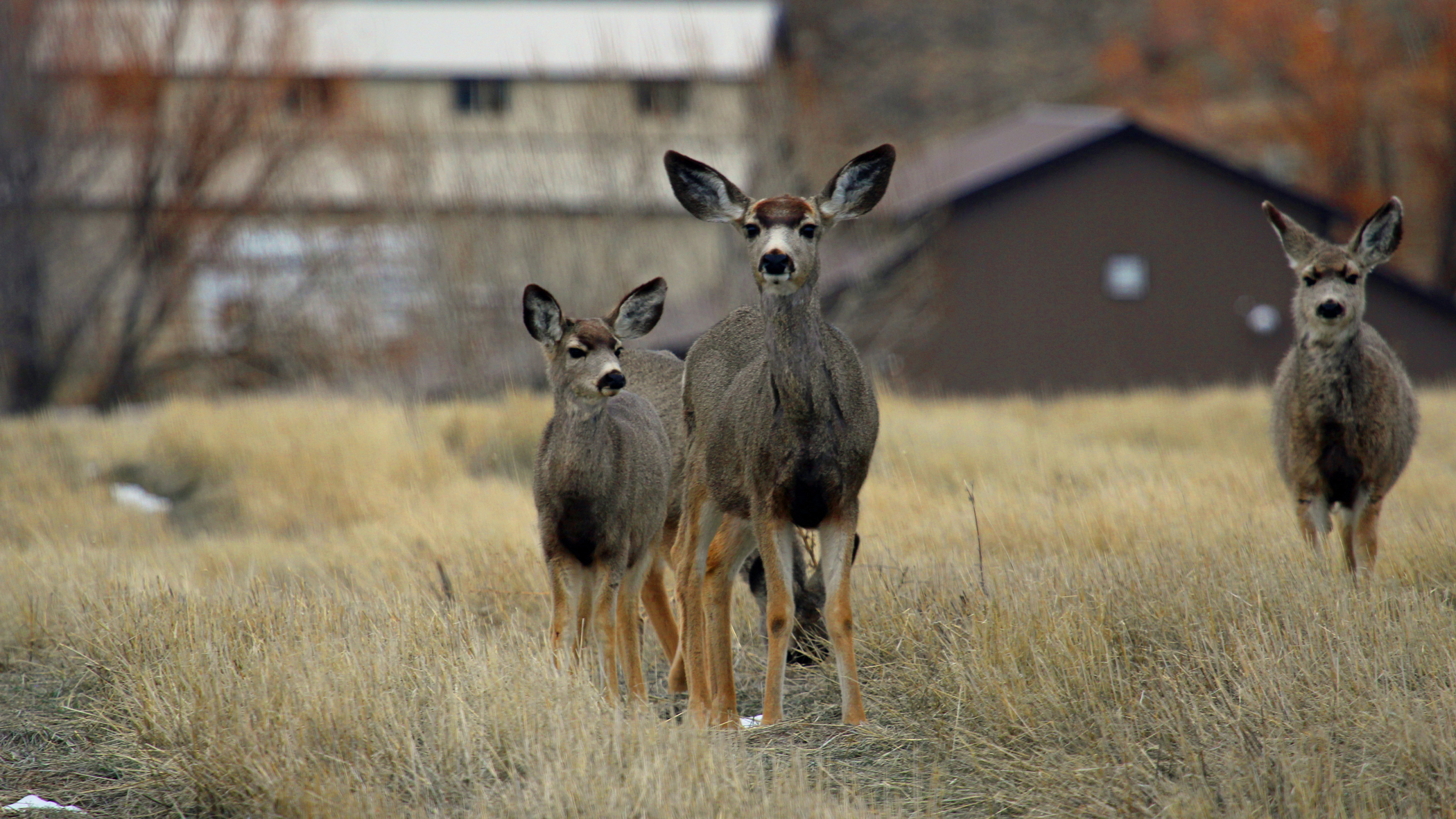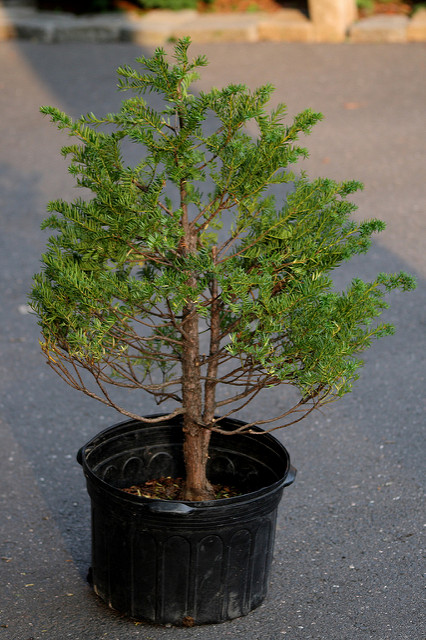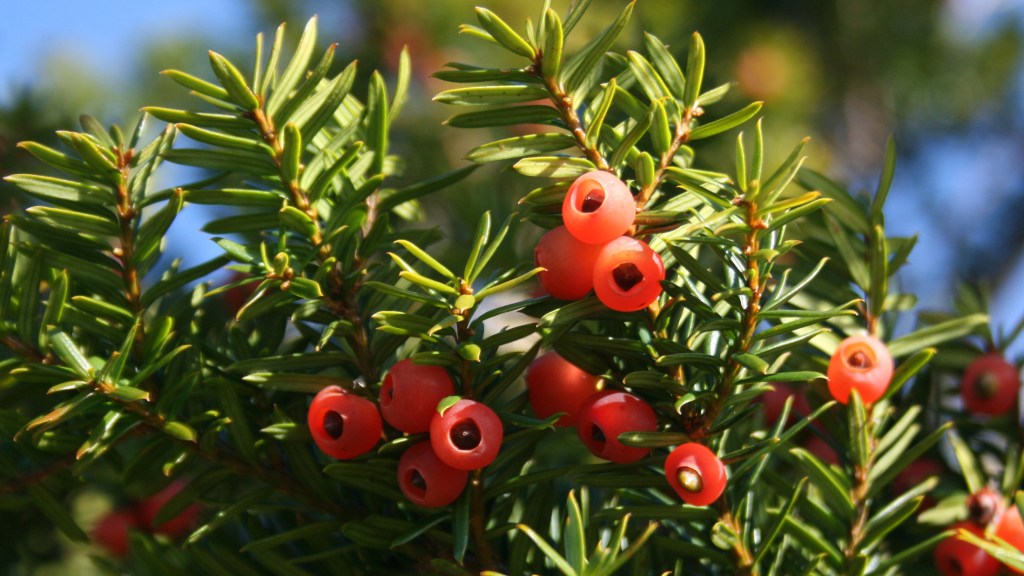You’re watching a deer out your window as it munches on your shrubs. You reach for the camera, but when you look back, the deer takes a few steps and falls over, dead.
Far-fetched? No. That scene has been repeated too many times near my Idaho home this winter.
The culprit? Japanese yew, a popular ornamental shrub. In January, the shrub caused the death of a herd of 50 pronghorn near Payette, Idaho, garnering significant media attention. That was followed by the reported deaths of dozens of elk, and an unknown number of mule deer.
Why are so many large mammals being killed by this shrub?
Many areas of Idaho have received a lot of snowfall this year. Elk, mule deer and pronghorns are migratory, and they move from high elevations to valleys. Often, those valleys are developed, putting them in proximity to people.
With heavy snowfalls, they move even closer to town, often using recently developed areas that had once served as winter range.
Homeowners see mule deer grazing on grass, and think they’re adaptable. But the suburban diet is not nearly as nutritious as the sagebrush, bitterbrush and other plants found in their native habitat. The deer thus eat what they find – and that includes the Japanese yew. It’s not native, but somewhat resembles native shrubs.

The yew kills quickly. The Idaho Statesman reported an instance where an Idaho Department of Fish and Game officer was educating a homeowner about the dangers of the shrub. A deer moved in and ate some during the meeting. It walked over a nearby hill and died.

Idaho’s Blaine County banned the shrub following elk deaths last winter. This seems a necessary measure, but the yew is a lucrative plant for many landscaping shops. The Idaho Department of Fish and Game has wrapped shrubs in plastic, keeping them safe from deer until the animals move back up into the high country.
If you live in deer or elk range, please don’t plant this shrub. Large mammals have a difficult enough time in the winter without this added threat.
Other plants and shrubs can kill wildlife. The Nandina tree produces berries that kill cedar waxwings, for instance. Plants marketed at popular garden departments as “bee friendly” often are treated with neonicitinoids – pesticides that kill bees.
Many invasive plants may not kill wildlife as dramatically as the Japanese yew, but they actually are even more harmful. Some landscaping plants spread beyond yards and choke out wildlife habitat. (While not a landscaping plant, the non-native cheatgrass has annihilated a lot of mule deer habitat, another reason they’re forced into neighborhoods).

Planting native species and wildlife-friendly plants is easier than you think – the National Wildlife Federation’s Backyard Habitat program and the Xerces Society’s tips for pollinator habitat can get you started.
For deer, elk and pronghorn, there is another important factor here: the protection of winter habitat. Healthy low-elevation lands, covered in a diverse mix of native plants, keep these animals healthy and out of the neighborhood. I enjoy seeing deer as much as anyone, but also know how stressful winter can be for them.
Let’s lend these animals a “helping hoof”: please don’t buy Japanese yew.




Awesome article! Thank you for making us more conscious of our environment!
– http://www.wvlandscaping.ca
Like Adria, I am also from CT. We have what I believe are Japanese yew lining our driveway, and the same family of deer have been munching on them for years. The following article states the white tail species, indigenous to the northeast, is apparently immune. https://www.gardeningknowhow.com/ornamental/shrubs/yew/japanese-yew-plants.htm
OMG. Are you talking about ” nandina domestica”shrubs? They are everywhere in our neighborhood and yard, and we do get migratory cedar waxwings. If this is true, I will yank them out. They are very attractive year round but we get lots of berries.
Hi Anne, It is nandina domestica, here is at least one published incident: https://www.ncbi.nlm.nih.gov/pmc/articles/PMC3005831/
Interesting. In CT the deer can decimate our foundation yews– esp in a cold winter–and thrive. Maybe these are just common yews, not Japanese yews, but they are very old and huge . Some of us keep one or two yews in the side woods, after they get too big in front of house, just so the suburban deer have something to eat that we no longer care about. To be honest, I wouldn’t mind if a few of our deer got sick as they are too numerous to sustain our natural woods & tender saplings.
The Holly berries in our area maintain their red berries thru Xmas and the New Year– then later suddenly flocks of robins and others are devouring the red berries. I was told that the berries stay on because they are poisonous– but after months of freezing temps they lose their toxicity, hence the sudden appeal to many birds who strip the bushes in a week or so. Nature’s way!
Great article thanks! I always say why risk it just plant natives 🙂
I wonder if Japanese yew is toxic to some wildlife in its homeland.
Somewhat related: Let us not forget the toxicity of certain linden or lime trees. I read that it varies from one year to the next. Big bee die-offs have been reported in Europe.
Excerpt from ‘A Sting In The Tale’ by Professor Dave Goulson. Page 128:
“Buff-tailed and white tailed bumblebees love the flowers of lime trees, although there is something in the nectar which seems to make them dopey and even sometimes kill them”.
Also, this site has a list of plants toxic to bees: http://www.buzzaboutbees.net/Plants-Toxic-for-Bees.html